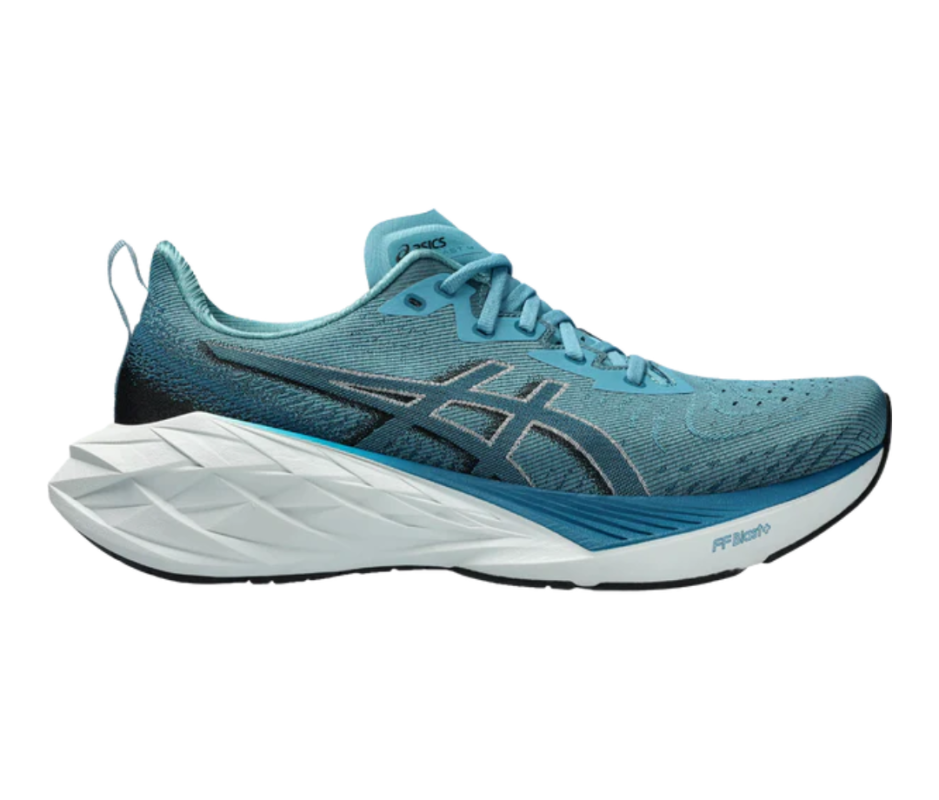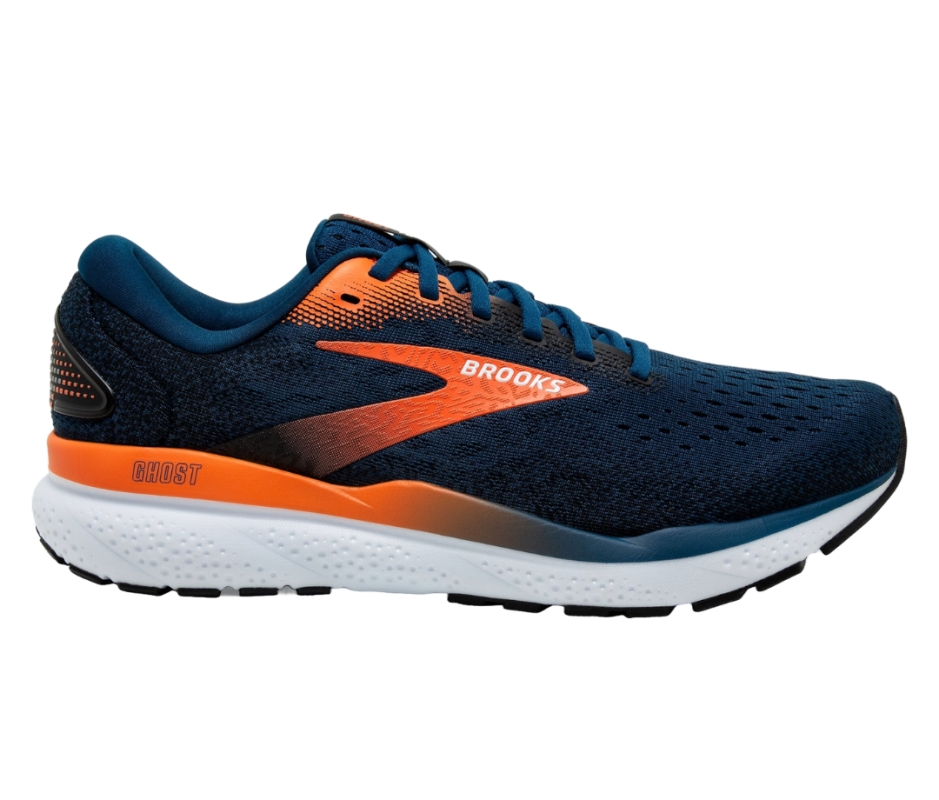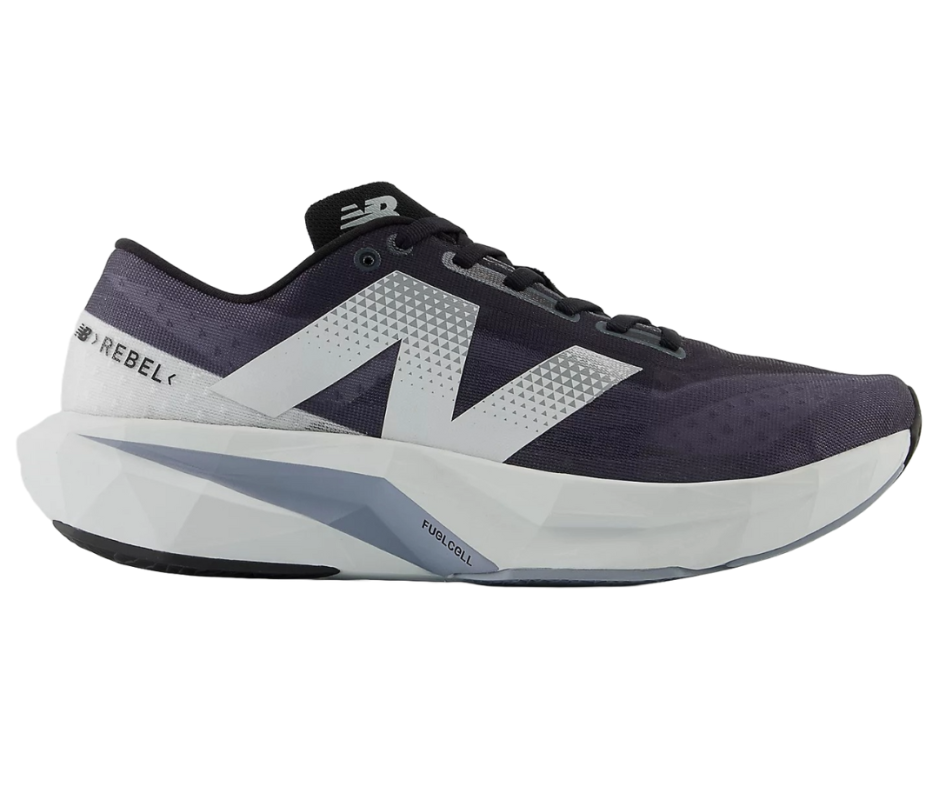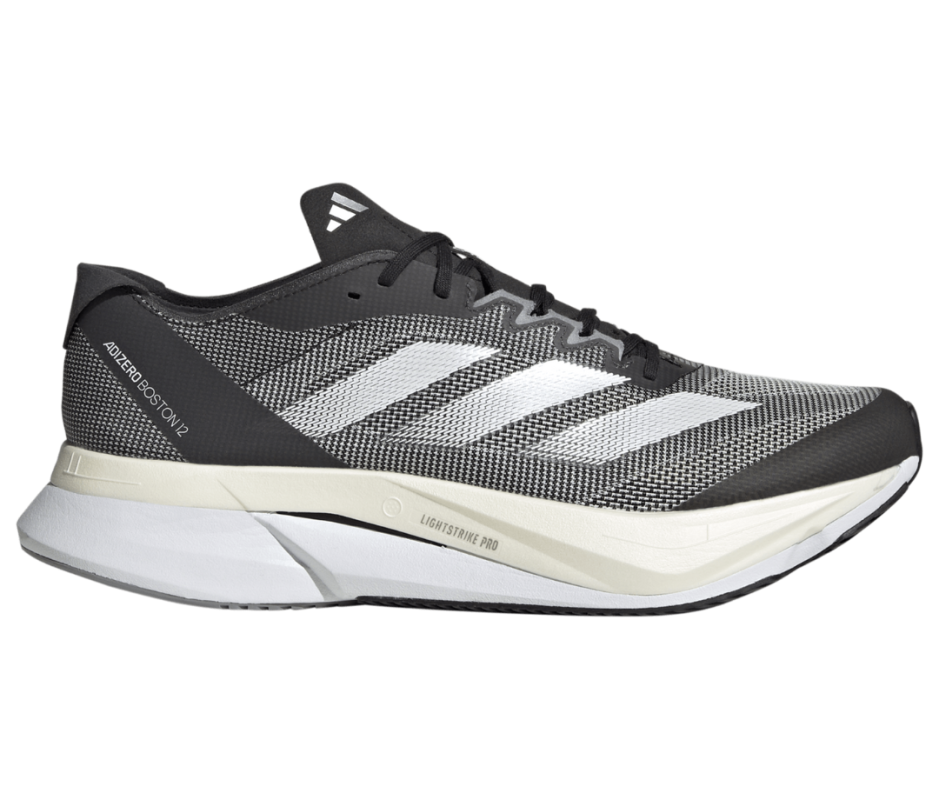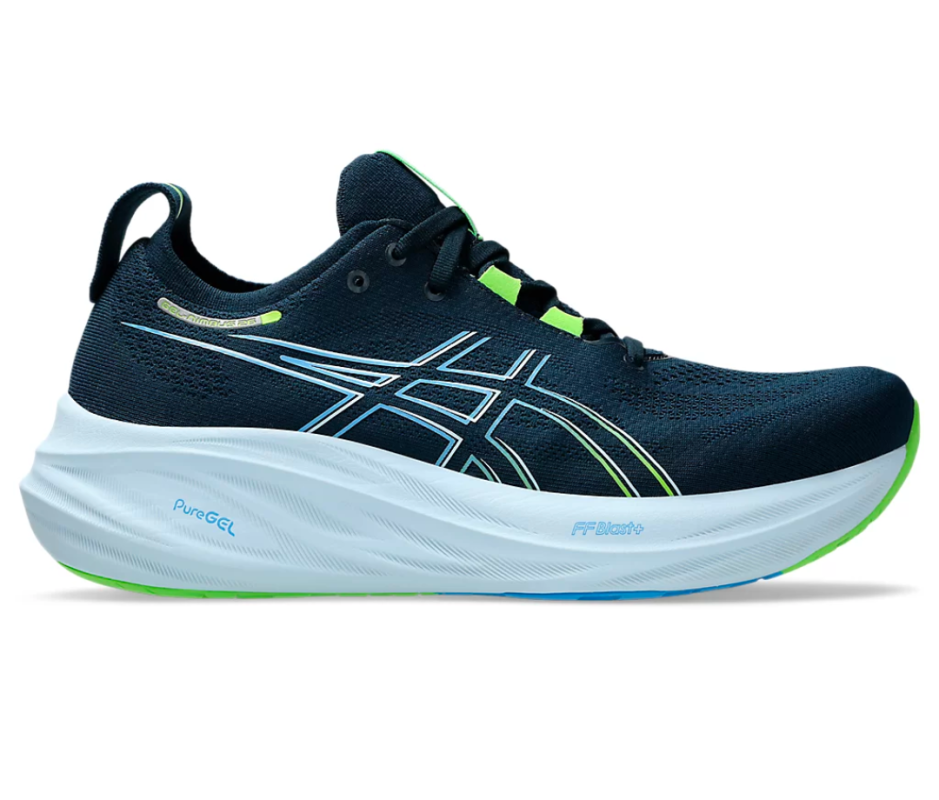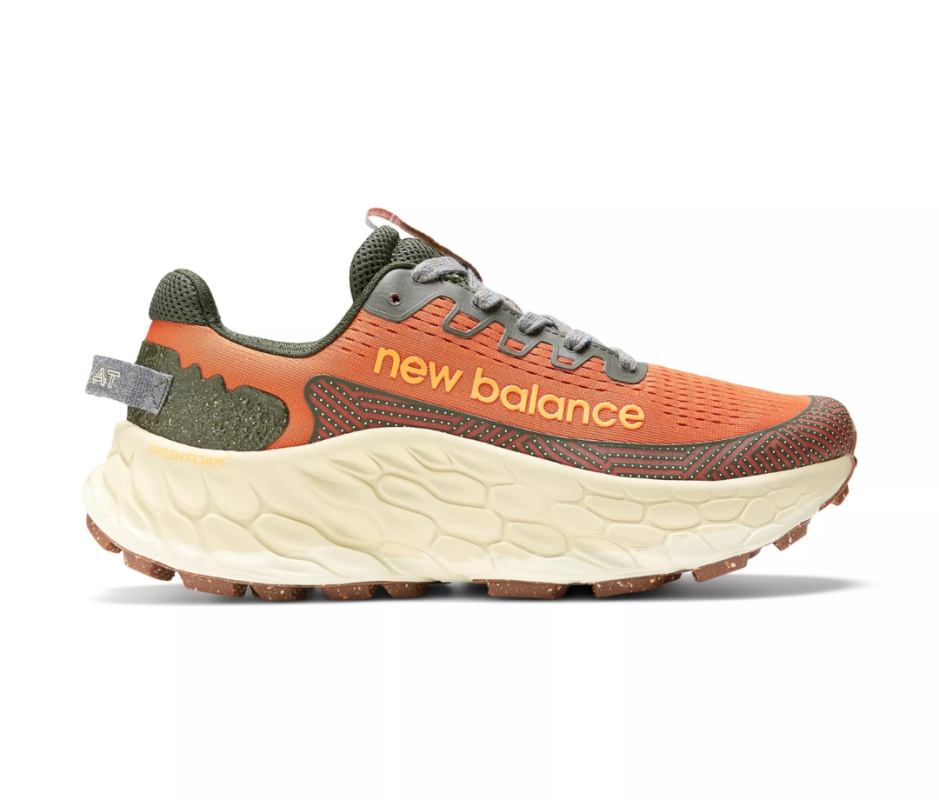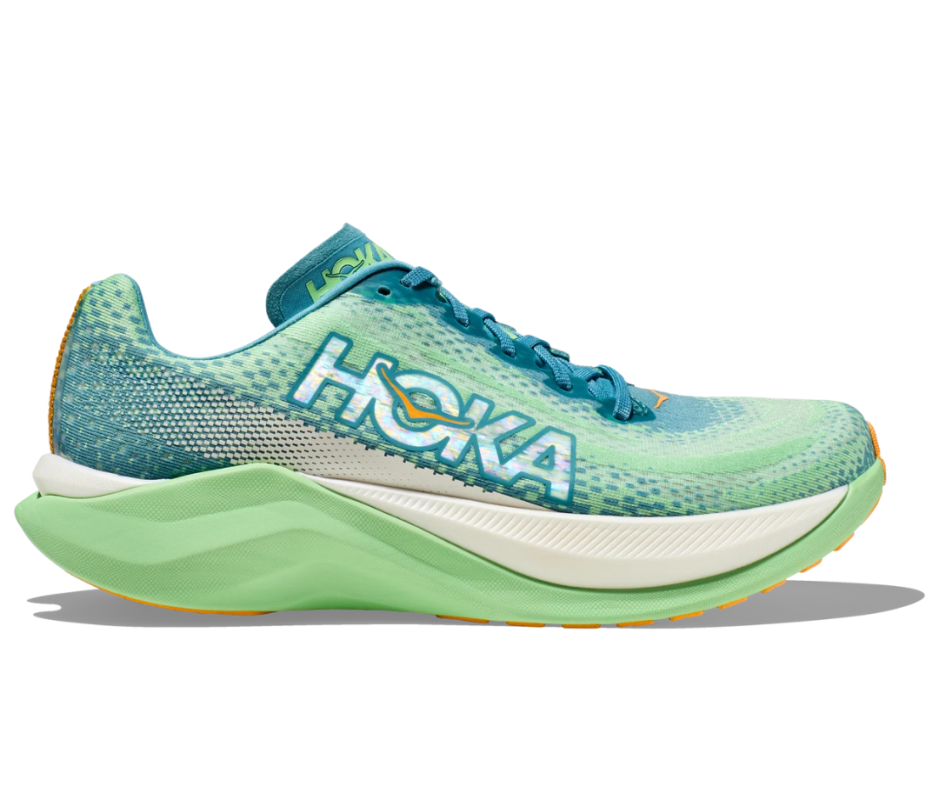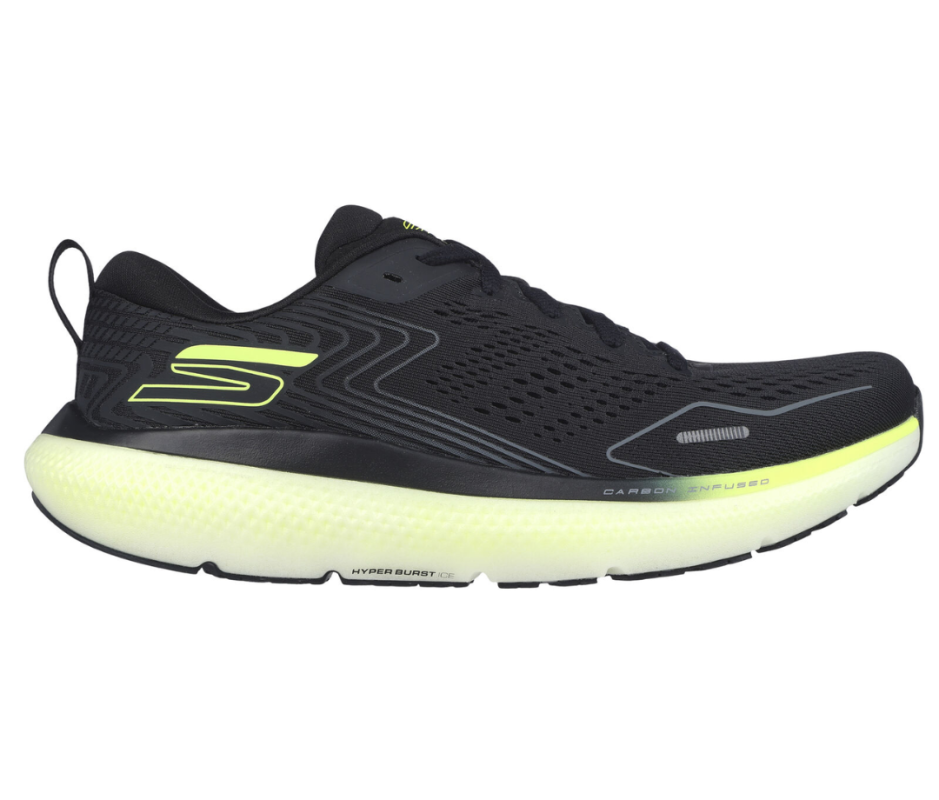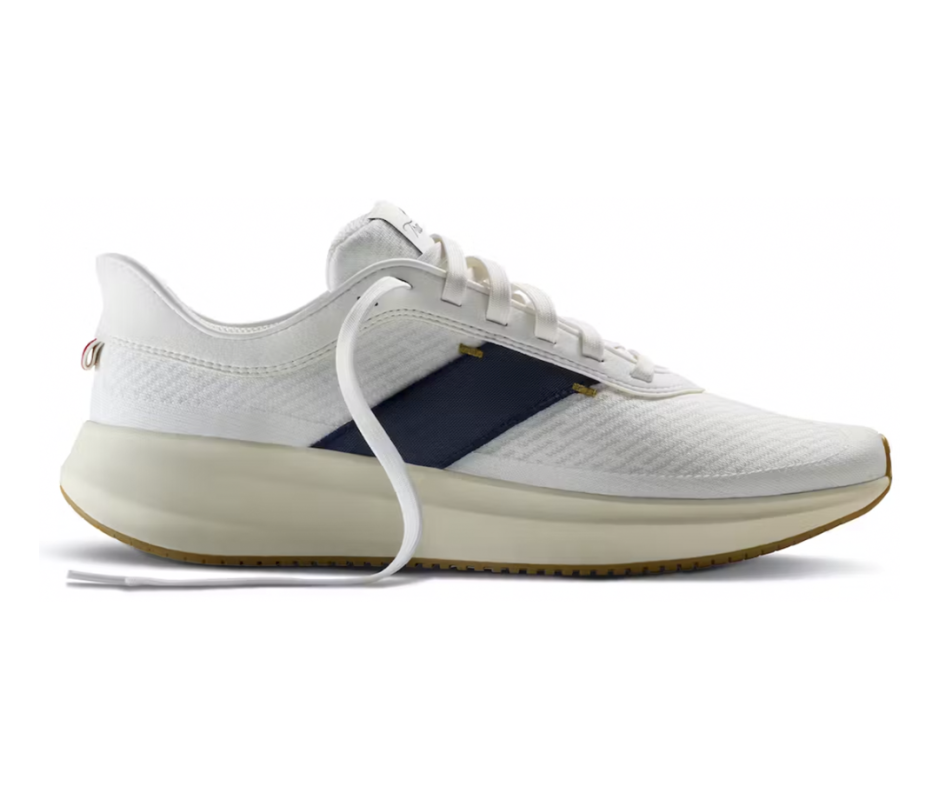Health
We Tested Dozens of Running Shoes. These Comfy Pairs Help Beat Shin Splints

Men’s Journal aims to feature only the best products and services. If you buy something via one of our links, we may earn a commission.
Shin splints are a high barrier to running. New or returning runners will start, only for that dreaded, nagging pain in their lower legs to halt their progress. I’ve been there—calf and shin pain are the factors that most often prevent me from logging more mileage.
I asked Dylan Sykes, D.P.T. and 2:25 marathoner, about the best running shoes to prevent shin splints.
“I’d be happy to help, but you might not like my answers,” he initially responded.
When we got to the nitty-gritty, he explained: Shin splints aren’t a result of shoe choice—though that can help or hurt—but rather a result of “too much, too soon.”
The intense shin pain you experience during or after running, Sykes added, is due to some weakness found in your leg, ankle, or foot. For most, this is simply a result of starting to run after a long break, or drastically increasing your running over a short time. The shin splints flare up and deliver sharp, consistent aches where your muscles and shin bone meet.
Again, running shoes alone can’t prevent shin splints. But here’s the good news: They can help alleviate shooting pain and discomfort. We rounded up a list of the best running shoes for those struggling with shin splints, including our best overall pick, Asics NovaBlast 4, a comfortable and versatile trainer at a great price.
Related: We Tested Dozens of Running Shoes. These Are the Best for Any Kind of Run
Best Overall Running Shoe for Shin Splints: Asics NovaBlast 4
Courtesy Image
If you only have the budget for one running shoe, I recommend the Asics NovaBlast 4 above all else. For $140, it’s an approachable, high-performance cushioned shoe that’s great for new and returning runners alike. The excellent FF Blast+ foam isn’t overly soft or plodding either; the midsole provides a perfect blend of comfort and response. At 9.2 ounces, it’s lightweight for a daily trainer, and the refined upper, while a bit less breathable than the outgoing version, is supremely comfortable and locks your foot in place. The 8mm heel-toe drop is also easy on the lower legs. Some trainers don’t offer much versatility, but the NovaBlast 4 helps you safely begin or accelerate serious running and reliably hit goals as you grow stronger.
Weight: 9.2 ounces
Heel-Toe Drop: 8mm
Pros:
- Responsive
- Extremely comfortable underfoot
- Transitions smoothly during stride
- Locked-in fit
Cons:
- Upper not as breathable as other options on this list
Best for New Runners with Shin Splints: Brooks Ghost 16
Courtesy Image
The Brooks Ghost 16 is an improvement over an already well-loved shoe. DNA Loft v3 foam is lighter and bouncier, which takes this classic neutral running shoe to a new level. The 12mm heel-toe drop is the largest on this list, and while that isn’t for everyone, whenever I ever experience calf or lower-leg pain, I tend to gravitate toward higher drops to avoid overworking my Achilles and shins. Indeed, if you are a heavier runner or land with a lot of heel impact, the Ghost 16 is ideal. Bonus: Brooks uppers and outsoles are always reliable.
Weight: 9.5 ounces
Heel-Toe Drop: 12mm
Pros:
- Comfortable, reliable, and long-lasting
- Works for a huge cross section of runners
- Available in a variety of widths and colorways
Cons:
- High heel-toe drop not for everyone
Most Versatile Running Shoe for Shin Splints: New Balance FuelCell Rebel v4
Courtesy Image
The New Balance Fuel Cell Rebel v4 is a beast of a trainer because of its versatility. Speedwork? These shoes can bolt. Distance? They’re mercifully comfortable. At 7.5 ounces, they’re some of the lightest trainers you’ll find, yet durable and robust enough for all runs. And for folks who don’t want the higher 8mm or 10mm drop, the Rebel’s 6mm drop is a sweet spot. If you want one shoe for all your training runs and races, the Rebel is a top option. That said, I noticed some heel slippage, as the counter isn’t very cushioned or well-fitting.
Weight: 7.5 ounces
Heel-Toe Drop: 6mm
Pros:
- Versatile
- Light and fun
- Cushioned and durable
Cons:
- Some heel slippage
- Heel counter not very comfortable
Best Racing Shoe for Shin Splints: Adidas Adios Boston 12
Courtesy Image
Most runners don’t need a super shoe to race well, and often the minimal, rigid construction of the top racers aren’t comfortable or practical for the average runner. So the Adidas Adios Boston 12 is great for runners seeking a capable, accessible racing shoe. More of a super trainer, the Boston 12 features Adidas’ capable EnergyRods system, which functions like a carbon plate but is fingered for more pliability and foot conformation. The cushion is comfortable enough for long runs, yet bouncy enough that it returns energy even late in the effort. At 9.2 ounces, these shoes may be slightly heavier than the top racers, but they feel vastly better. There could be a bit more structure in the heel and tongue to make the shoe fit more closely. But for $160, you save roughly $100 over high-end racing shoes.
Weight: 9.2 ounces
Heel-Toe Drop: 7mm
Pros:
- Super-shoe features at a lower cost
- Fun, springy ride
- Accommodating, accessible cushion
- Breathable upper
Cons:
- Flimsy heel counter
- Poor tongue and lacing system
- Heavier than top racers
More Running Shoes That Help Alleviate Shin Splints
Best for Bigger Runners With Shin Splints: Asics Gel-Nimbus 26
Max-cushion shoes are sometimes squishy and unresponsive. And sure, Asics Gel cushioning has a solid rep for comfort. But the foam in the Gel-Nimbus 26 is especially responsive, and the stable, plush bed of cushioning makes it an excellent shoe for bigger, heavier runners. When shin splints happen because parts of the ankle, leg, or foot complex aren’t strong enough, runners who carry a bit of extra weight are at increased risk for overworking their muscles. The combination of a soft, stretchy upper, durable outsole, and fantastic midsole comfort eases the impact of running, making the Gel-Nimbus 26 a trusty shoe for gradually increasing mileage.
Weight: 10.7 ounces
Heel-Toe Drop: 8mm
Pros:
- Plush heel cushioning
- Comfortable, stretchy sock-like liner
- Soft, bouncy foam
- Comes in a variety of widths, colorways, and outsoles
Cons:
- Not good for the most speedy runs
- Expensive compared to other Asics
Best Max-Cushion Trail Shoe for Runners With Shin Splints: New Balance More Trail v3
My go-to trail shoe for easy days and recovery runs is the New Balance More Trail v3. These max-stack trail trainers seem like they would be cumbersome to run in, at least based on appearance. But actually, they’re surprisingly stable and snug. The More Trail v3 has plush foam that is soft and supportive to help cushion any sore spots from rocks or gravel. The Vibram treads on the outsole are aggressive and grippy. My only qualm is that these aren’t the most versatile trail shoes, since while you can log long trail miles, they can’t handle aggressive ascents, descents, or short and fast efforts.
Weight: 11.4 ounces
Heel-Toe Drop: 4mm
Pros:
- Plush and comfortable
- Flexible midsole
- Grippy Vibram lugs
- Available in three widths
- Super stable on trails
Cons:
- Not great for speedy trail runs
- Heavy
- Naturally wide
Best Fast Running Shoe for Shin Splints: Hoka Mach X
When it comes to faster efforts, no shoe has come off my shelf more recently than the Hoka Mach X. In fact, these shoes are more comfortable when you are running fast. My feet felt light and springy off the ground, and I had some of my best speed workouts in these. At 9.2 ounces, they’re lightweight but robust, and the fit is spacious and accommodating. There’s enough outsole rubber for solid durability. At first, the somewhat stretchy laces struck me as a bit odd, but after running fast in these, I found I can really cinch them down without risk of hotspots, as they flex and stretch when sprinting. If you’re looking to mix speed back into your expanding running program, the Mach X makes a great partner.
Weight: 9.4 ounces
Heel-Toe Drop: 5mm
Pros:
- Bouncy and supple
- Comfortable and breathable upper
- Can work for races
Cons:
- Not as comfortable on slow runs
Most Comfy Running Shoe for Shin Splints: Skechers GoRun Ride 11
The Skechers GoRun Ride 11s is seriously fun to run in for a max-cushion trainer. The midsole foam beautifully blends softness and bounce. This stack is less than the GoRun Max lineup, but equally comfortable, making for a more versatile shoe, though it’s a little heavier than I’d like. The upper is made of breathable mesh and conforms well to a variety of foot shapes. And the Michelin outsole is tacky and durable. Best of all, at $120, the GoRun Ride 11 is one of the best value shoes, period.
Weight: 10.2 ounces
Heel-Toe Drop: 6mm
Pros:
- Responsive and comfortable foam
- Tacky and durable Michelin outsole rubber
- Breathable upper
Cons:
- Heavy
- Not incredibly versatile
Best Shoe for Getting Back Into Running: Tracksmith Eliot Runner
The Tracksmith Eliot was a total dark-horse pick for this list, and it represents a really great niche in the sport of running. The truth is that running and staying consistent are hard. Tracksmith’s shoe is a great option for folks who ran in high school or college and haven’t participated in the sport as much lately. Why? Because it shows off how far shoe technology has come in recent years. In a minimal, handsome silhouette, Tracksmith’s first foray into footwear packs a ton of performance. It’s plush with responsive transitions on every stride. The upper is pliable and breathable, the outsole is grippy and durable, and the ride is quick and comfortable. But the fit is rather long and narrow. That said, if you fit in this Tracksmith trainer, it’s an awesome option for those retuning to running.
Weight: 9.2 ounces
Heel-Toe Drop: 9mm
Pros:
- Responsive and comfortable
- Pliable and breathable upper
- Surprisingly durable and grippy outsole
- Versatile enough for most runs
Cons:
- Long and narrow fit
- Expensive
Related: We Tested Dozens of Running Jackets. These Are the Best for Any Kind of Weather
How We Chose the Best Running Shoes for Shin Splints
Though Sykes makes clear that shoe choice alone won’t fix your shin splints, he acknowledges it is important to find a shoe that feels comfortable. Two things to consider: Old, worn-down shoes aren’t going to help. And shoes with low heel-toe drops put a little more stress on the calf. Neither will necessarily give you shin splints, but fresh foam underfoot and a higher heel-toe drop, say 6mm or more, are a safer choice.
You’re guaranteed to run more miles if you’re healthy and feeling strong. Overdoing it as you start or get back into running is a recipe for shin splints. So, if you experience pain, back off and give your body rest. If pain persists for more than a week or two, Sykes says it might be time to consider seeing a physical therapist.
While there may not be one “right shoe,” there are plenty of wrong running shoes. Haven’t bought new running shoes since high school? It’s time for an upgrade. Trying to make sneakers or cross-trainers work? Get something designed for running.
Shoes that are excessively worn out or not engineered for running don’t help you avoid injury and, in many cases, cause injury. As important as it is to steadily increase your mileage and intensity, set yourself up for success with running shoes that feel right to you—and listen to your body along the way.
Why You Should Trust Me
I run a lot, for enjoyment rather than competition. And so my running shoe needs tend to be representative of a large group of runners. I run on all types of surfaces, from mountain trail runs to road runs, and I’ve experienced every ailment from shin splints to plantar fasciitis due to my high arches.
Over the past year, I ran hundreds of miles in nearly 100 pairs of running shoes spanning different brands. I’ve been testing many of these shoes since early 2023, and have had the opportunity to test older and newer versions side by side in some cases.
In addition to my individual testing, I worked with a team of Men’s Journal testers over a variety of reviews and gleaned insight from all types of runners, from heavier men looking for maximum support to elite, sub-four-minute milers.
Related: We Tested Every Hoka Running Shoe—These Are the Best
Health
Homecoming: An Evolutionary Approach for Healing Depression and Preventing Suicide

Part 2
In Part 1, I shared my challenges with depression, the fact that the suicide rate for males is so much higher than it is for females, and how these realties have impacted men and their families. Here we will look more deeply into the underlying causes and potential solutions to this world-wide problem.
The Most Underappreciated Fact About Men and Why Males Are the Risk-Takers
Dr. Roy Baumeister is one of the world’s leading social scientists. Understanding his work can better help us understand a lot about why men are the way they are and specifically why men are the risk-taking gender.
Baumeister is the author of more than thirty books and four hundred scientific articles. In his groundbreaking book, Is There Anything Good About Men? How Cultures Flourish By Exploiting Men, he says,
“If evolutionary theory is right about anything, it’s right about reproduction. Nature will most favor traits that lead to success at reproducing. But for thousands of years, men and women have faced vastly different odds and problems in reproducing. On this basic task, women faced good odds of success, whereas men were born to face looming failure.”
Given that all humans are mammals, there is a basic biological fact of life. It is the female who carries the baby in her womb and will always be 100% sure that any offspring carry her genes. Males can never be 100% certain, hence the truism, “mother’s baby, father’s maybe.” Further, through evolutionary history more females than males reproduced.
Dr. Baumeister tells us that
“Of all the people who ever reached adulthood, maybe 80% of the women but only 40% of the men reproduced. Or perhaps the numbers 60% versus 30%. But one way or another, a woman’s odds of having a line of descendants down to the present were double those of males.”
Baumeister goes on to say,
“That’s a stunning difference. Of all humans ever born, most women became mothers, but most men did not become fathers.”
The result is that throughout human history men became the risk-takers, competing with other men to be chosen by a woman to mate with him. Some successful males (think Genghis Kahn) fathered hundreds of children. Some men stuck out completely.
Women’s motto became: “Life has handed you a good thing; don’t blow it. Play it safe.”
Men’s motto was the opposite: “The odds are against you. Better take your chances.”
Says Baumeister,
“That’s why we are descended from playing-it-safe women and risk-taking men.”
Help-Seeking vs. Risk-Taking, The Empathy Gap, and Implications for Male Suicide
My father didn’t seek help with his depression until he was forced to do so and the help available at the time was inadequate. This is still true for many men today.
“Perhaps it is not surprising that, if there are large gender differences in risk-taking and protective behavior,”
says Dr. Martin Seager who we met in Part 1,
“there will also be correspondingly large gender differences in help-seeking. An individual or group that is more likely to take risks to protect others is also by definition less likely to seek help or self-protection.”
As my father found, he was not only driven to take risks to work in a challenging profession in order to take care of his family, but this indication was supported and encouraged by the society at large.
“The evidence also indicates that society is correspondingly calibrated to expect this difference and is consequently less empathic towards male death and injury,”
says Seager.
“If this is the case, then it must follow logically that men will be on average more driven than females to take their own lives because of:
a. A greater instinct to ignore personal safety and confront danger
b. A greater instinct to protect others (and greater shame at failing to do so)
c. A lower sense of entitlement to receive help or protection from others.”
Towards a More Scientific and Effective Approach to Reducing Male Suicide
Dr. Seager’s approach offers importance guidance for clinicians as well for men and their families.
By simply allowing archetypal gender differences to be researched, understood, and honored, gender-specific solutions to male suicide can indeed be found. Here are some important points:
- Carl Jung talked of archetypal patterns evolved within the human species and shared within a “collective unconscious.”
- Jung’s thinking was clearly influenced by ancient Chinese conception of “Yin” and “Yang” in which femininity (one aspect of “Yin”) is seen along with masculinity (one aspect of “Yang”) as complementary system of opposites within the natural universe.
- Dr. Seager proposes the following simple and practical instinctual, evolutionary-based, male archetypes:
- Fighting and winning.
- Providing and protecting.
- Maintaining mastery and self-control.
- These archetypes contribute to a sense of masculine identity, honor and strength. To the extent that a man feels these elements are missing, he will feel the opposite of masculine shame and failure.
My own experiences and research has convinced me that men’s inherent proclivity to maintain emotional self-control helped men be successful hunters during the millions of years humans were hunter-gatherers. Men needed to fight potential threats from other men in order to protect our families. Men needed to take-risks in order to compete with other men in our own tribes so that we would be chosen by women. These evolutionary-based instincts are built-in and though they don’t control our behavior, we still make individual choices, they cannot be ignored.
Calling masculinity “toxic” or blaming the “patriarchy” just serves to divide and alienate us. We create more conflict between left and right, males and females, Republicans and Democrats, Us and Them. We need more bridges not more walls.
I met the internationally acclaimed scholar, futurist, and activist, Riane Eisler shortly after her book, The Chalice & the Blade was published in 1987. We have been friends and colleagues ever since. She said,
“Underlying the great surface diversity of human culture are two basic models of society. The first, which I call the dominator model, is what is popularly termed either patriarchy or matriarchy—the ranking of one half of humanity over the other. The second, in which social relations may best be described as the partnership model. In this model—beginning with the most fundamental difference in our species, between male and female—diversity is not equated with either inferiority or superiority.”
Why an Archetypal Approach to Male Depression and Suicide Works Better
For some clinicians, men’s innate desire to fight and win, to protect women and children, and to control our emotions, are seen as “toxic” or “harmful.” They try and encourage men to change and express themselves in different ways. Dr. Seager’s approach is different:
“If we assume that men on average are more likely than women to be driven to ‘fight, protect’ and ‘retain mastery/self-control,’ then it is clear that trying to encourage men collectively to ‘open up, be vulnerable’ and ‘seek help’ potentially violates deep-rooted masculine instincts. Such an approach may even increase a sense of masculine shame and failure.”
Dr. Seager concludes that we have a choice between two divergent approaches:
- Socially challenging and reconstructing masculine behavior and masculinity itself as a negative stereotype through educational methods with the aim of teaching males to seek help and share emotions more openly (i.e. change masculinity).
- Changing the social attitudes and responses of society towards men and boys to create more empathy for masculinity as a positive part of the human spectrum, while providing male-friendly services for men and boys that both honors the male archetype and offer new and better ways of expressing it (i.e. change society).
In advocating for the second of the two approaches, Dr. Seager says,
“I am saddened that our profession seems to be no better than the rest of society in being blind to the fact that men and boys also have needs and problems arising from their gender. Raising this subject always incurs unreasoned resistance and even at times hostility. This in itself shows the need to keep promoting the issue.”
My father was fortunate to have survived a health-care system based on the first approach that never worked for him, he finally found his way to one that accepted his inherent drive to take risks in support of his family. I wrote about his journey in my book, My Distant Dad: Healing the Family Father Wound and an article, “My Father’s Stay at God’s Hotel: A Slow-Medicine Approach to Healing Mental Illness.”
The Moonshot For Mankind: Male-Positive Programs For Men and Their Families
I launched MenAlive in following the birth of our first son, Jemal, on November 21, 1969 and our daughter Angela, on March 22, 1972. Fifty years ago, there were very few programs that focused on men’s mental, emotional, and relational health. Now there are many. Three years ago I invited a number of colleagues who I knew were offering new and effective approaches for helping men to join me in creating a central hub for the thousands of organizations that are now available.
Come visit us at our website, MoonshotForMankind.org. Here are a few of the organizations that have joined our movement:
ManTherapy.org: Man Therapy is an evidence-based, decades-long, multidisciplinary effort to break though stigma, improve help-seeking behavior and reduce male suicide. And they’ve got the stats to back it up. Learn more here.
MenLiving.org: MenLiving delivers programs and experiences to help create a world of healthy, intentional, connected men who can heal and thrive. Learn more here.
Men and Boys Compassion Initiative (MBCI) is an international movement to help men and boys cultivate their compassionate selves. This also requires the cultivation of courage and wisdom to heal the male crisis of disconnection.
You can learn more about the work of Martin Seager at the Centre For Male Psychology.
We need more programs for men that are evolutionary-archetypally informed. You can learn more at MenAlive.com and MoonshotForMankind.org. If you like articles like these, I invite you to become a subscriber.
Health
Closing of Rural Hospitals Leaves Towns With Unhealthy Real Estate



By Taylor Sisk
JELLICO, Tenn. — In March 2021, this town of about 2,000 residents in the hills of east Tennessee lost its hospital, a 54-bed acute care facility. Campbell County, where Jellico is located, ranks 90th of Tennessee’s 95 counties in health outcomes and has a poverty rate almost double the national average, so losing its health care cornerstone sent ripple effects through the region.
“Oh, my word,” said Tawnya Brock, a health care quality manager and a Jellico resident. “That hospital was not only the health care lifeline to this community. Economically and socially, it was the center of the community.”
Since 2010, 149 rural hospitals in the United States have either closed or stopped providing in-patient care, according to the Cecil G. Sheps Center for Health Services Research at the University of North Carolina. Tennessee has recorded the second-most closures of any state, with 15, and the most closures per capita. Texas has the highest number of rural hospital closures, with 25.
Each time a hospital closes there are health care and economic ripples across a community. When Jellico Medical Center closed, some 300 jobs went with it. Restaurants and other small businesses in Jellico also have gone under, said Brock, who is a member of the Rural Health Association of Tennessee’s legislative committee. And the town must contend with the empty husk of a hospital.
Dozens of small communities are grappling with what to do with hospitals that have closed. Sheps Center researchers have found that while a closure negatively affects the local economy, those effects can be softened if the building is converted to another type of health care facility.
In Jellico, the town owns the building that housed the medical center, and Mayor Sandy Terry said it is in decent condition. But the last operator, Indiana-based Boa Vida Healthcare, holds the license to operate a medical facility there and has yet to announce its plans for the building, leaving Jellico in limbo. Terry said local officials are talking with health care providers that have expressed interest in reopening the hospital. That’s their preferred option. Jellico does not have a Plan B.
“We’re just in hopes that maybe someone will take it over,” Terry said. Meanwhile, the nearest emergency rooms are a half-hour drive away in LaFollette, Tennessee, and across the state line in Corbin, Kentucky.
An hour and a half away in Fentress County, the building that once housed Jamestown Regional Medical Center has been empty since June 2019, when Florida-based Rennova Health — which also previously operated Jellico Medical Center — locked it up.
County Executive Jimmy Johnson said Rennova’s exit from Jamestown was so abrupt that “the beds were all made up perfectly” and IV stands and wheelchairs sat in the halls. About 150 jobs evaporated when the center closed.
Rennova still owed Fentress County $207,000 in taxes, Johnson said, and in April the property was put up for auction. A local business owner purchased it for $220,000. But Rennova was granted a year to reacquire the building for what it owed in back taxes, plus interest, and did so within a few days.
Abandoned hospital buildings dot the map in central and east Tennessee. But in the western part of the state, two communities found uses for their empty buildings, albeit not in reopening hospitals.
Somerville, about an hour east of Memphis, lost its hospital, Methodist Fayette, in 2015. Its parent company, Methodist Le Bonheur Healthcare, donated the building to the town and threw in $250,000. The building is now a satellite campus for the University of Tennessee-Martin.
The conversion was pushed along by the town leveraging other funding. Bob Turner, Somerville’s city administrator, said both the town and the county matched Methodist’s quarter-million dollars toward the renovation. In its first year in Somerville, the university raised another $125,000. Tennessee’s governor then matched that $875,000 in his state budget.
Somerville is now in the seventh year of a 10-year agreement with the university, which rents the building from the town.
“We have a building, an asset, that’s probably worth $15 million,” Turner said. “It’s a four-year university right here in the heart of Fayette County.”
Mendi Donnelly, Somerville’s community development director, said the county is still in desperate need of a hospital, but “we’re thrilled that we were able to make lemonade out of our lemons.”
Ninety miles to the northeast, in rural Carroll County, Tennessee, another shuttered hospital found new life.
The closing of McKenzie Regional Hospital in 2018 was a blow to the local economy. But Baptist Memorial Health Care, which operates a hospital in nearby Huntingdon, bought the assets — including the building, land, equipment, and ambulance service — and subsequently donated the building to the town of McKenzie.
Cachengo, a technology company, ultimately took over the space. Because of hospitals’ electrical infrastructure, the site was a perfect fit for a business like his, said Ash Young, Cachengo’s chief executive. Young said Cachengo is now looking into repurposing abandoned hospitals across the country.
Jill Holland, McKenzie’s former mayor and a local-government and special-projects coordinator for the Southwest Tennessee Development District, believes the town can become a technology hub.
“It’s opening a lot of doors of opportunity for the youth in the community,” Holland said.
Back in Jamestown, the vacant hospital is “deteriorating,” said Johnson, the county executive. “It could have been used to save lives.” Rennova did not respond to a request for comment.
The University of Tennessee Medical Center opened a freestanding emergency room elsewhere in Jamestown, sparing residents a half-hour drive to the closest ER. Johnson believes the old hospital building could serve the community as housing for those who are homeless or as a facility to treat substance use disorder.
Brock, the health care quality manager, thinks things will get better in Jellico, but the community has had its hopes dashed more than once.
Brock believes a freestanding emergency room could be a viable solution. She urges her community to be responsive to “a new day” in rural health in America, one in which a hospital must focus on its community’s most urgent needs and be realistic about what that hospital can provide.
“Maybe it is just the emergency room, a sustainable emergency room, where you could hold patients for a period of time and then transfer them,” Brock said. “And then you build upon that.”
She added, “There are options out there.”
KFF Health News is a national newsroom that produces in-depth journalism about health issues and is one of the core operating programs at KFF—an independent source of health policy research, polling, and journalism. Learn more about KFF.
Subscribe to KFF Health News’ free Morning Briefing.
—
Previously Published on kffhealthnews.org
***
You Might Also Like These From The Good Men Project
Join The Good Men Project as a Premium Member today.
All Premium Members get to view The Good Men Project with NO ADS. A $50 annual membership gives you an all access pass. You can be a part of every call, group, class and community. A $25 annual membership gives you access to one class, one Social Interest group and our online communities. A $12 annual membership gives you access to our Friday calls with the publisher, our online community.
Register New Account
Need more info? A complete list of benefits is here.
—
Photo credit: unsplash
Health
Noah Lyles' Ab Workout for a Rock-Solid Core

Whether you’re looking for your fastest mile ever, itching to cook your friends on the court in pickup or pickleball, or cooking through a sprint workout on the track like an Olympian, you need a rock-solid abs.
“If you have a straight stick, and you throw its end on the ground, it’ll bounce back up; but if there’s bend in the stick, it might bounce in any direction,” says Team USA’s Noah Lyles, a favorite to win gold in the 100m at the Paris Olympics. “It’s the same thing when you’re running. If you don’t have a tight midline—a stable, well-structured core—when you make contact with the ground, you’re not using all the power you’re producing.”
Few athletes know more about building power and speed than Lyles. To create the explosive stride that’s led him to eight track and field world championship and Olympic medals—including double gold in the 100 and 200 meters at the 2023 world champs—the 27-year-old sprinter spends four days per week in the weight room, doing workouts that focus on building power: Exercises like cleans, hex bar deadlifts, front squats, back squats, and power throws.
To make sure he’s converting his power into speed with each step, Lyles also sweats through a core workout in just about every session, building that springy, power-saving stiffness in his middle that lets him unleash the power he builds through his barbell work and track sessions.
As part of his partnership with CELSIUS energy drinks, Lyles spoke with Men’s Journal to share one of the core routines he uses to help build gold medal abs. There are also some easier alternatives for each exercise for non-Olympians who need to scale down.
Try this workout at the end of your next strength training session, or as a workout on its own. For each move in this six-exercise routine, rest 1 to 2 minutes between sets.
1. GHD Machine Hollow Hold

Westend61/ Getty Images
Why It’s Effective
You may have done hollow holds before on the floor, but Lyles’ version adds an extra challenge: Instead of on the ground, this move is performed on the glute-ham developer bench. A staple in CrossFit gyms, this machine can be used for butt and leg development, as the name suggests, but is also popular for intense, full-range situps and other core moves.
How to Do It
- Get into the GHD with your feet in the foot pad area, your legs straight and your butt sitting off the GHD’s large pad, to start.
- Sit up so your body forms a 90-degree angle. Reach your arms straight up overhead (you can also gentle hold the back of your head).
- Maintaining a flat back, slowly lean back to open your hip angle. Lean back as far as you can—as close to horizontal as possible—hold your body steady by bracing your core.
- Once you’ve found the depth you can hold, maintain the hollow position for 30 seconds.
- Perform 4 x 30-second holds.
Easier Variation: Hollow Body Hold
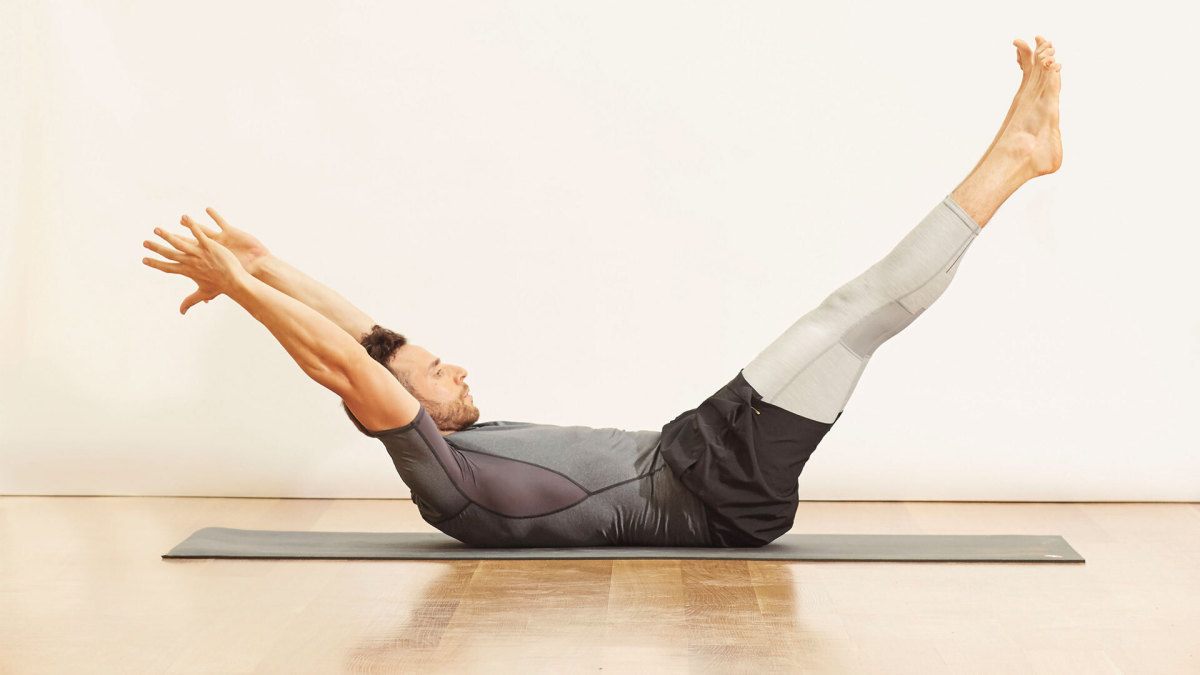
Justin Steele
The closer your torso is to perpendicular, the easier the move will be. And if you don’t have access to a GHD machine, you can perform hollow holds on the floor.
How to Do It
- Lie on your back with your arms and legs fully extended, squeezing everything tight, to start.
- Press your lower back into the ground and slightly lift your legs and upper back off the floor.
- If you’re a beginner, hold this position. If you’re more advanced, rock forward and back—holding the shape of a banana.
2. Toes to Bar
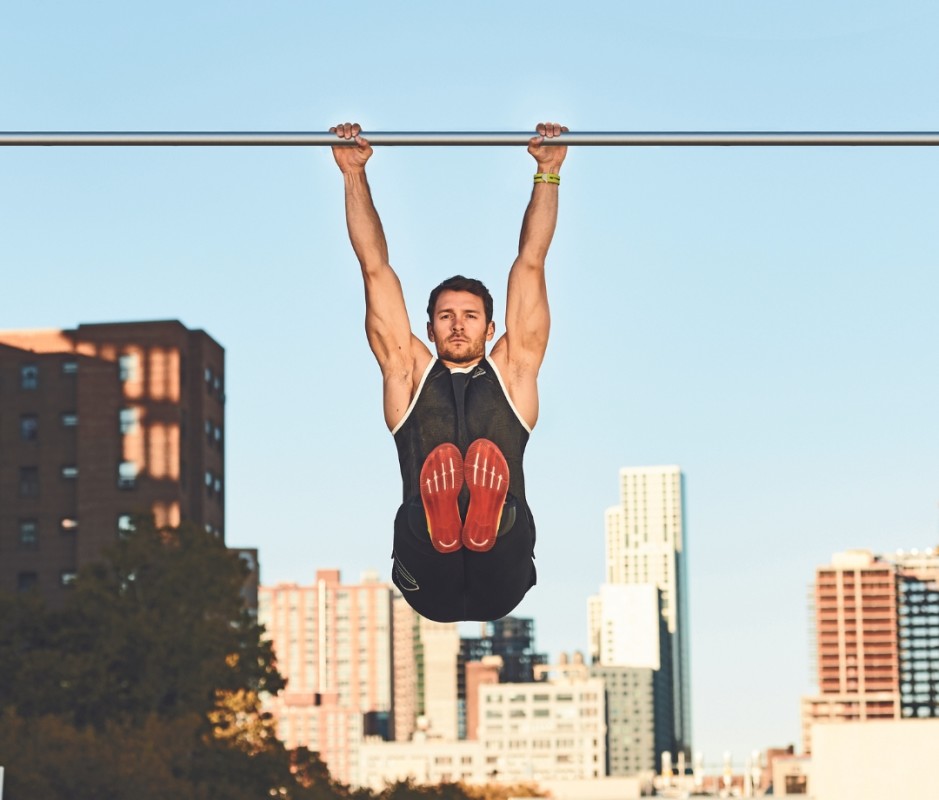
James Michelfelder
Why It’s Effective
Toes to bar does more than just build a six-pack: Studies have shown this type of move is one of the most effective for strengthening the obliques, even when done without twisting. Lyles does the full toes to bar variation.
How to Do It
- Hang from a pullup bar with straight arms set slightly wider than shoulder-width. Draw your shoulder blades back and down, to start.
- Keeping your feet together and legs straight, engage your core to hinge your hips, raising your legs until your toes touch the bar.
- Control your descent back to the starting position. That’s 1 rep.
- Perform 4 x 7-10 reps.
Easier Variation: Hanging Knee Raise
- Hang from a pullup bar with straight arms set slightly wider than shoulder-width. Draw your shoulder blades back and down, to start.
- Bend your knees and bring your thighs up until they’re parallel with the floor.
- As you advance, move on to a straight-leg raise, where your legs are extended straight from hips.
3. V-Up
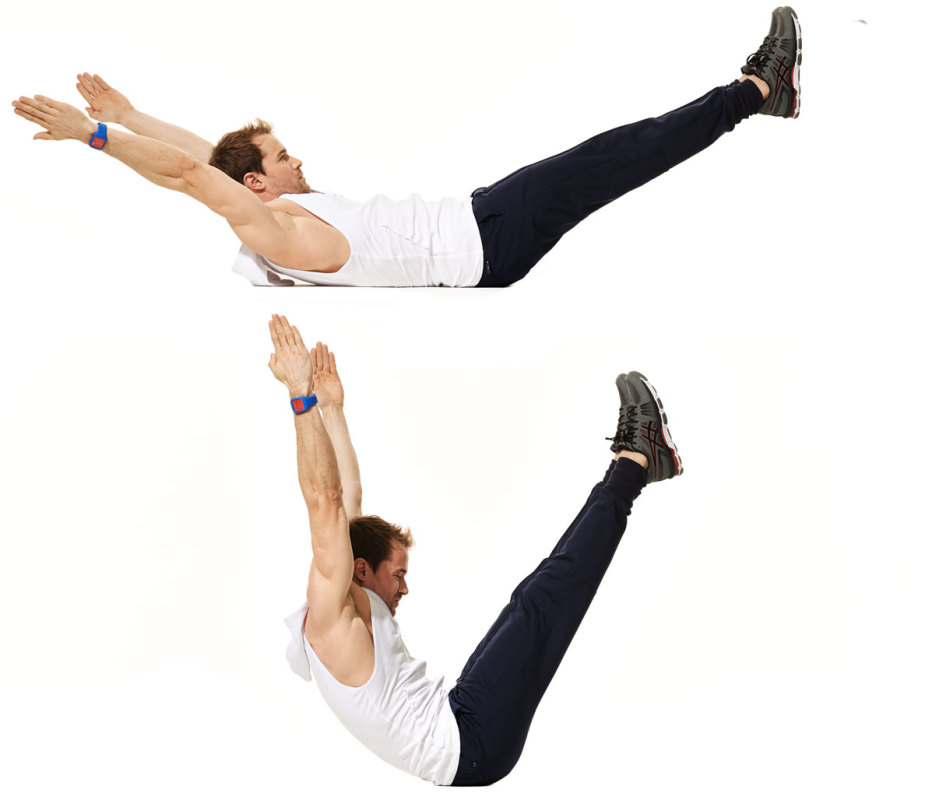
Why It’s Effective
For someone as strong as Lyles, this advanced sit-up might seem easy. To keep it challenging, he says, he’s uncompromising on form: “It has to be that V shape in the middle, and you have to be touching your toes,” he says, in order to get the full benefit.
How to Do It
- Lie on your back with your legs straight and arms overhead.
- Without bending your elbows or knees, contract your abdominal muscles, fold your body up by lifting your legs off the floor and stretch your arms toward your toes. Keep your back straight. As you rise, your body will form a “V” shape, and will then close like a venus fly trap.
- Pause, then return to the starting position. Do four sets of 20 repetitions.
Easier Variation: Deconstructed V-Up
If you’re flailing and throwing your torso up and down, split the move in two: Perform the upper body portion of the V-up, doing a situp with a straight back. Then do the lower body portion, raising your legs from the ground while your upper body is flat on the ground.
4. Star Plank
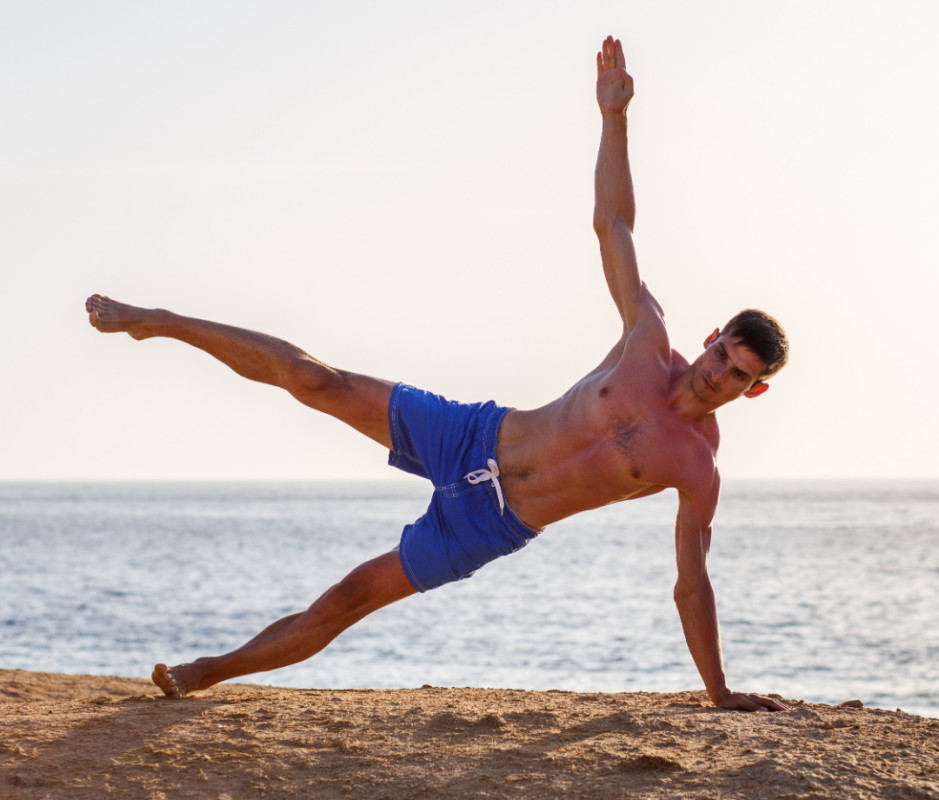
sergio_kumer/ Getty Images
Why It’s Effective
This move, Lyles says, is probably the most important in his core routine because it engages the core and the glutes at the same time. Running requires front and posterior muscles to work together in balance, and this trains just that.
To help fire up your glutes in this move, try getting into the side plank in a different way: Instead of lifting your hips off the floor laterally, do so from a position where your knees are slightly bent, and your feet are a little closer to your waist than they will be in the full side plank position. As you raise your body up, squeeze your butt to press your hips forward and take the bend out of your knees. As you do this, your feet will slide a bit on the ground into position.
How to Do It
- Get into a classic side plank position: Lie on your left side with your forearm on the floor directly under your left shoulder, with your legs and feet stacked. Have a slight bend in your knees.
- Prop yourself up on your elbow, and squeeze your glutes to straighten your legs as you assume the forearm side plank position so that your body forms a straight line from ear to ankles. To make this harder, perform the move with your left arm straight beneath you, balanced on your hand instead of your forearm.
- Straighten your top arm so that your torso forms a “T” shape.
- Without letting this rigid body line slacken and without bending your knee, raise your top leg (right) up away from your bottom leg. Your arms and legs will form an “X” or star shape.
- Hold this position for 15 seconds, then repeat on the other side. Perform 4 x 15-seconds holds.
Easier Variation: Side Plank
Too hard? Skip the star shape. Stop at step 3, and perform the four 15-second holds on each side.
5. Forearm Plank
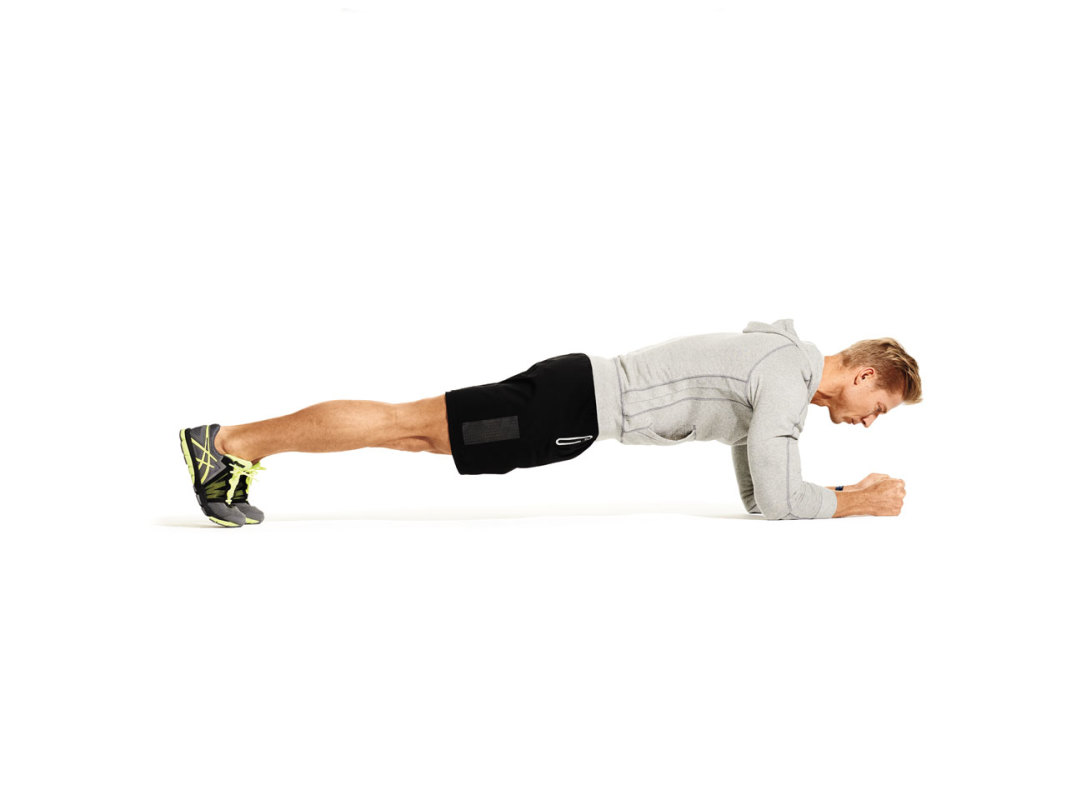
Beth Bischoff
Why It’s Effective
Don’t just hang out in a plank, Lyles says. Engage your core by drawing your belly button towards your spine. Feel your lats in your back firing. Squeeze your glutes. And grip the floor with your fingers. This, he says, will turn this “easy” move into a challenge.
How to Do It
- Assume a classic pushup position, but on your forearms: Prop yourself up so that your elbows are directly beneath your shoulders, palms facing down. Form a straight line from your head to heels.
- Engage your core, glutes, legs, and lats, and hold this rigid body line for one minute. Repeat for four total holds of one minute each.
Easier Variation: Plank From Knees
You can also perform planks on your knees. Instead of a rigid line from head to heels, maintain a rigid body line from head to knees.
6. Glute Kickback Machine
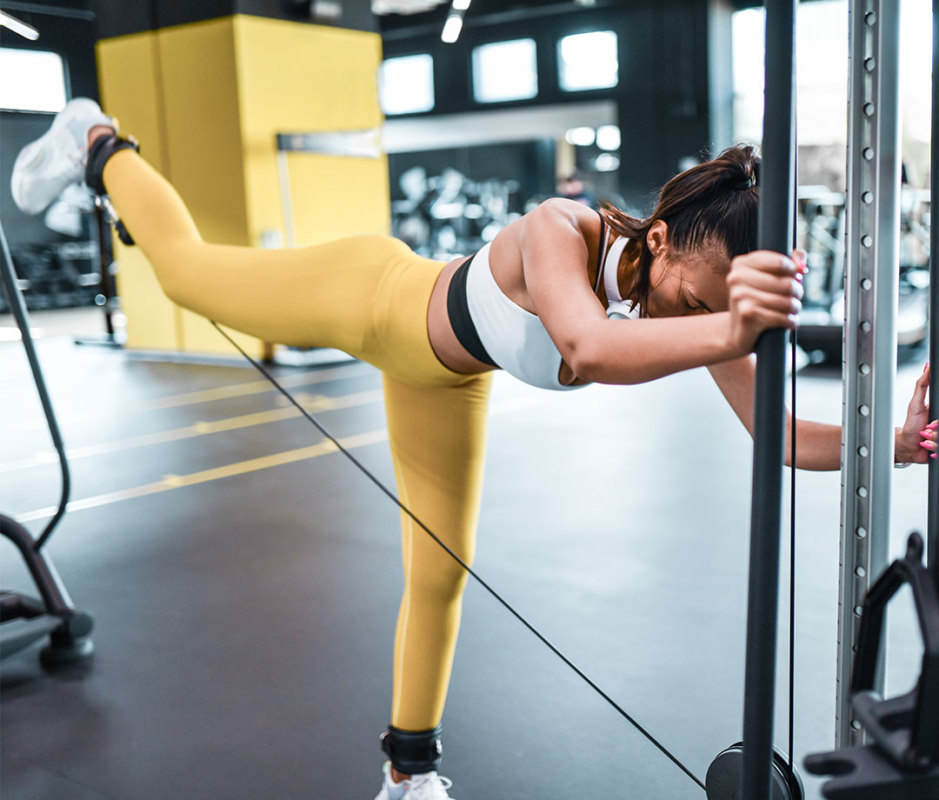
Getty Images
Note: This image depicts cable glute kickback, which is an alternative if you don’t have access to a glute kickback machine.
Why It’s Effective
“A lot of people think that this machine is about how far you can throw the weight up using your hamstring, but they’re missing the point,” Lyles says. “Your core should be more turned on than your hamstrings.”
Lyles says to concentrate on doing this move with purpose. “Go at a slower pace, and push the weight up and down with the same intent and same speed. You should feel every muscle working,” he says.
How to Do It
- Stand in the machine with your forearms resting on the pad, your hands on the handles, and one foot behind you against the plate. You should be bent forward at the hips. This is the starting position.
- Brace your core, and feel it engage as you press the weight back by using your glutes, not your hamstrings. Push back slowly.
- Return to the start, maintaining this same pace. Do four rounds of 6 reps on each side.
-

 African History5 years ago
African History5 years agoA Closer Look: Afro-Mexicans 🇲🇽
-

 African History6 months ago
African History6 months agoBlack History Facts I had to Learn on My Own pt.6 📜
-

 African History5 years ago
African History5 years agoA Closer Look: Afro-Mexicans 🇲🇽
-

 African History1 year ago
African History1 year agoMajor African Tribes taken away during the Atlantic Slave Trade🌍 #slavetrade #africanamericanhistory
-

 African History1 year ago
African History1 year agoCameroon 🇨🇲 World Cup History (1962-2022) #football #realmadrid #shorts
-

 African History6 months ago
African History6 months agoBlack History Inventors: Mary Kenner 🩸
-

 African History1 year ago
African History1 year agoNo African pre-Columbus DNA? 🤯🤯 #history #mesoamerica #mexico #african
-

 African History1 year ago
African History1 year agoOrigin Of ‘Cameroon’ 🇨🇲😳#africa

